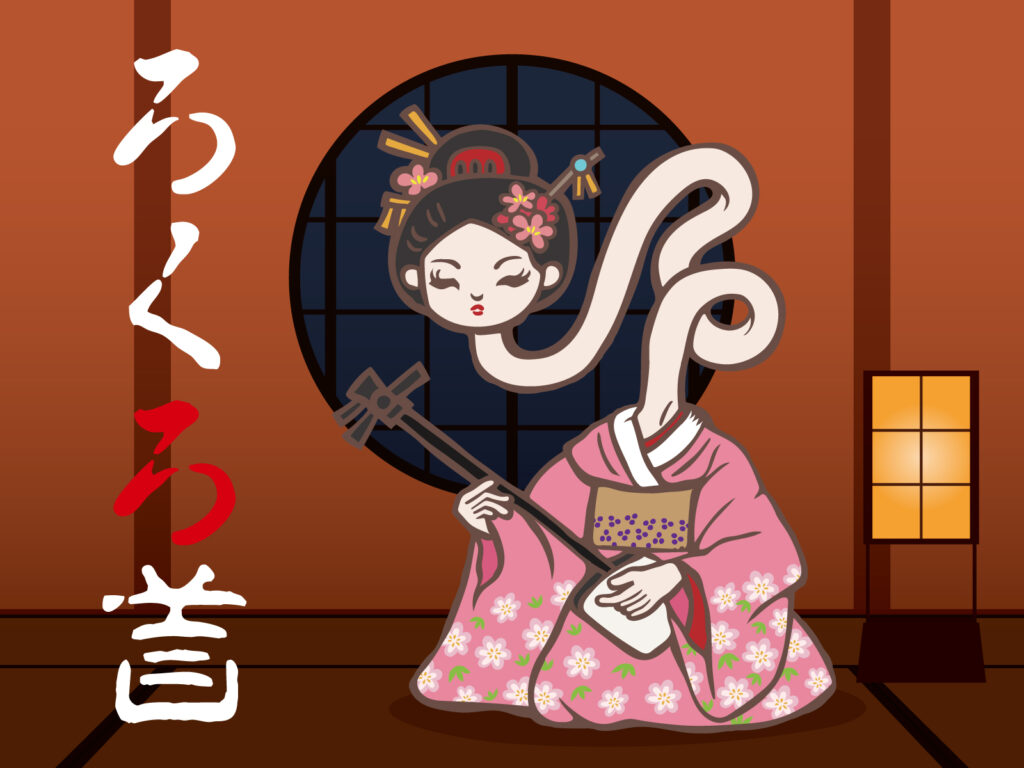
When summer arrives in Japan, it’s not just fireworks and festivals that take center stage—ghost stories, haunted houses, and supernatural legends also come alive. From eerie forests to candlelit kaidan and traditional tests of courage, the season is rich with chilling traditions. One fascinating part of this culture is yokai anime—a genre where Japan’s mythical creatures, spirits, and monsters are brought to life through powerful storytelling, vivid art, and emotional depth. Whether it’s fear, folklore, or fun, yokai anime captures the spirit of Japanese summer like nothing else.
❄️ Why Do Japanese Tell Ghost Stories in Summer?
There’s a cultural idea in Japan that chills from fear can help you cool down in the heat. So, people seek out scary stories, haunted houses, and even graveyard strolls to send shivers down their spines.
It might sound unusual, but it’s not so far from the way Europeans gather around a bonfire for late-night legends or watch horror films during summer sleepovers.
👺 Japanese Ghosts vs. Western Ghosts
Japanese ghosts, known as yūrei, are often deeply emotional spirits with unfinished business or lingering sorrow. Unlike Western ghosts, which often appear in castles or are tied to a specific tragic event, yūrei are typically depicted in white funeral clothing, with long, unkempt black hair, and—interestingly—no feet. This lack of feet symbolises their separation from the physical world.
In contrast, Western ghosts are frequently portrayed as translucent, floating figures or sometimes skeletal beings, often with more visual emphasis on horror. Japanese horror tends to emphasize atmosphere, psychological fear, and silence, whereas Western horror often relies on shock and gore.
👹 Yūrei vs. Yōkai
While yūrei are spirits of the dead, yōkai are supernatural creatures or phenomena rooted in folklore—some mischievous, some terrifying. Famous examples include the long-tongued Rokurokubi, the river-dwelling Kappa, and the wall-licking Nurarihyon. Yōkai can interact with humans in playful, eerie, or even helpful ways, while yūrei usually evoke fear and tragedy.
These distinctions shape how ghost stories are told. Japan’s tales often blend sorrow, beauty, and spiritual themes, in contrast to the good vs. evil binary seen in much of Western horror cinema.
🧠 Japanese vs. Western Horror Films
Japanese horror films like Ringu and Ju-on use minimal sound, shadows, and slow pacing to build tension. The fear comes from suggestion and inevitability, not just jump scares. This stands in contrast to Hollywood horror, which often relies on graphic imagery, fast edits, and musical cues to frighten viewers.
The emotional depth and philosophical undertones of Japanese horror resonate with many global audiences who are looking for something more nuanced and culturally rooted.
👻 Classic Japanese Ghost Stories
Japanese ghost stories, or kaidan, are often deeply emotional and psychological. Some famous ones include:
- Okiku’s Well: A maid falsely accused, who returns to count dishes forever.
- Yotsuya Kaidan: A woman wronged and disfigured, seeking revenge.
- The Peony Lantern: A ghostly love story told in flickering candlelight.
In addition to these well-known stories, Japan’s rich tradition of folk legends gives rise to memorable figures such as:
- Yuki-onna (The Snow Woman): A beautiful spirit who appears in snowstorms, freezing travellers with her icy breath. Sometimes vengeful, sometimes sorrowful.
- Zashiki-warashi: A child-like spirit believed to bring good fortune to households—if treated well. Mischievous but usually harmless.
- Umi no Kaii (Sea Monsters): Ghostly or monstrous sea creatures that haunt coastal towns, especially fishermen and sailors, often linked to drowned souls or sea gods.
These stories are passed down through generations, often adapted in regional festivals or folktales, and continue to shape Japan’s seasonal storytelling culture.
Many of these tales are set in summer and are told during the Obon season, a time when spirits are believed to return to the world of the living – similar in spirit to the Mediterranean Festa dei Morti or All Saints’ Day, but in the warmth of July and August.
🏚 Haunted Houses and Courage Tests
Summer also means kimodameshi – tests of courage. These may include visiting spooky places at night, walking through haunted house attractions, or telling ghost stories in the dark.
It’s a tradition that brings people together, especially teens and young adults, much like ghost tours in old castles of Spain or Italy. Except in Japan, the spirits are often vengeful women with long black hair…
👻 What Are Japanese Haunted Houses Like?
Known as obake yashiki, Japanese haunted houses are immersive attractions designed to deliver a memorable scare. These facilities use elaborate sets, actors in makeup, and storytelling to take visitors through eerie environments full of ghosts, spirits, and yōkai.
There are several types:
- Fixed Haunted Houses: Permanent attractions found in amusement parks and tourist areas. Examples include:
- Senritsu Meikyu (Labyrinth of Fear) at Fuji-Q Highland, considered one of the scariest in the world.
- Odaiba Kaiki Gakkō (Odaiba Haunted School), which recreates a haunted classroom experience.
- Mobile Haunted Houses: These travel from place to place, often set up in trucks or shipping containers. Notable ones include:
- Mugan (Faceless), a psychological horror house that changes layout with each event.
- Zekkyō Kyūkyūsha (Screaming Ambulance), where participants lie on stretchers while being rolled through a horror experience.
- VR Haunted Attractions: The latest generation of haunted experiences, using virtual reality to simulate ghost encounters with unsettling realism.
👫 How to Enjoy Haunted Houses
Haunted houses in Japan are not only about fear—they’re also about bonding. Many people go with friends or as couples:
- Friends often challenge each other to enter together, scream, and laugh it off afterward.
- Couples use the tension to draw closer, making it a classic summer date idea.
Just remember:
- Don’t run, go backwards, or stop inside the attraction.
- Watch your step and be aware of overhead obstacles.
- Never touch the actors or damage props.
- If the experience is too intense, many places have emergency exits for early exit.
Japanese haunted houses are especially popular in the summer due to the cultural idea of using fear to cool down. However, unlike in many Western countries where haunted attractions peak during Halloween, Japan keeps them alive in the heat of July and August.
As technology improves, the realism and intensity of these attractions continue to grow—making each visit an unforgettable thrill.
🧌 Horror in Pop Culture
Modern Japan has given the world iconic horror like The Ring, Ju-on (The Grudge), and Another. These aren’t just frightening – they reflect the country’s spiritual beliefs and respect for the dead.
Even anime and manga get in on the action, with summer episodes often including haunted school trips, mysterious forests, or supernatural legends.
One of the most influential horror-themed manga series is GeGeGe no Kitaro (https://en.wikipedia.org/wiki/GeGeGe_no_Kitar%C5%8D), created by Shigeru Mizuki in the 1960s. The series centres around Kitaro, a boy from the ghost tribe, who mediates between the human world and the world of yōkai (Japanese monsters). Kitaro and his friends, such as Medama-Oyaji (his eyeball father) and Nezumi Otoko (Rat Man), encounter a variety of supernatural beings. Mizuki’s deep respect for folklore, coupled with his wartime experiences, brought nuance and cultural depth to these tales. Over the years, it has been adapted into multiple anime series and movies, and remains a touchstone for Japan’s ghostly storytelling tradition. Merchandise such as Kitaro plush toys, keychains, yokai encyclopedias, and even theme parks make it a living legacy.
Another franchise that won the hearts of children (and secretly, adults too) is Yo-Kai Watch (https://en.wikipedia.org/wiki/Yo-kai_Watch), a multimedia phenomenon that began as a video game in 2013 before becoming a hit anime and manga. In the story, a young boy discovers a special watch that allows him to see and befriend yōkai who influence human behaviour—like laziness, forgetfulness, or sudden anger. Unlike traditional horror, Yo-Kai Watch uses humour and playful character design to introduce yōkai to a new generation. In Europe, it drew comparisons to Pokémon and gained popularity through Nintendo releases, toys, trading cards, watches, and even lunchboxes featuring characters like Jibanyan and Whisper.
For older fans, Yu Yu Hakusho (1990–1994) (https://en.wikipedia.org/wiki/YuYu_Hakusho), created by Yoshihiro Togashi, blends supernatural horror with action-packed adventure. It follows Yusuke Urameshi, a teenage delinquent who dies saving a child and is given a second chance as a “Spirit Detective” investigating ghosts, demons, and strange phenomena in the human and spirit worlds. With its thrilling tournament arcs, compelling characters, and dramatic fights, the series became a cult classic not only in Japan but across Europe, especially in Italy and France. Yu Yu Hakusho also inspired a wide range of merchandise—from action figures and T-shirts to video games and Blu-ray collections.
These titles reveal how yōkai and spirits are not only objects of fear in Japan, but also friends, rivals, and sources of mystery and wonder—deeply tied to seasonal storytelling and everyday imagination.These aren’t just frightening – they reflect the country’s spiritual beliefs and respect for the dead.
Whether you’re drawn to the eerie charm of GeGeGe no Kitaro, the mischievous fun of Yo-Kai Watch, or the thrilling world of Yu Yu Hakusho, yokai anime offers a unique blend of folklore, fantasy, and fright. These stories go beyond entertainment—they reflect Japan’s spiritual beliefs, respect for the dead, and centuries-old traditions of storytelling.Curious to explore more yokai anime, Japanese ghost stories, or want to collect authentic yokai goods? We’re here to help! Our team in Japan can source and deliver yokai-themed merchandise directly to your door in Cyprus or Greece—from manga, anime figures, and charms to rare collectibles.📩 Feel free to contact us anytime via our [Contact Form], Messenger, or email at [email protected]. We’d love to hear from you—and help you connect with the supernatural side of Japan! 👻
